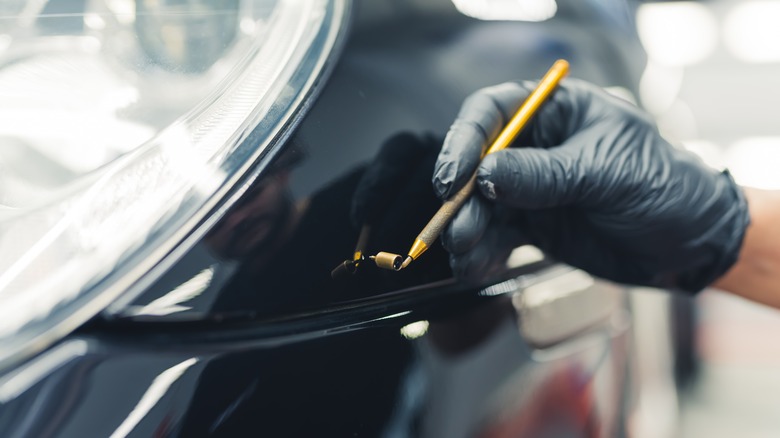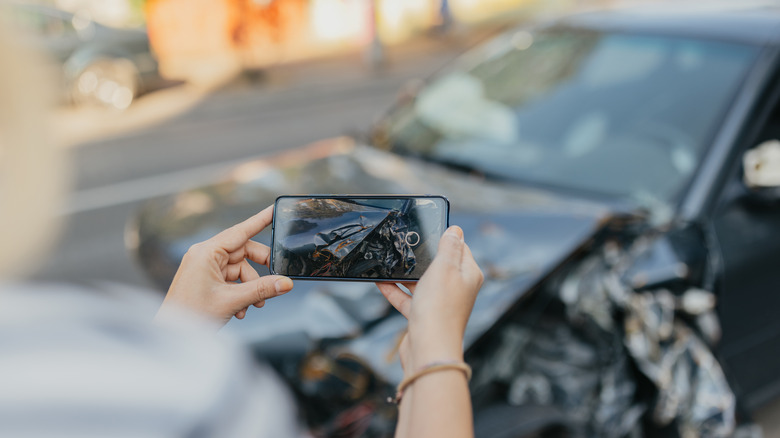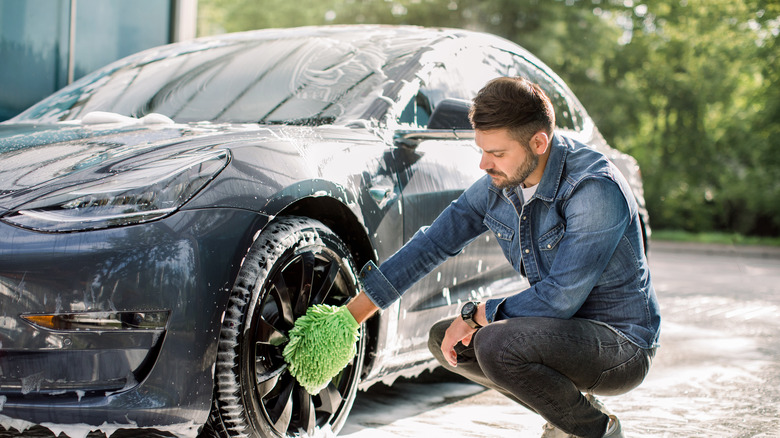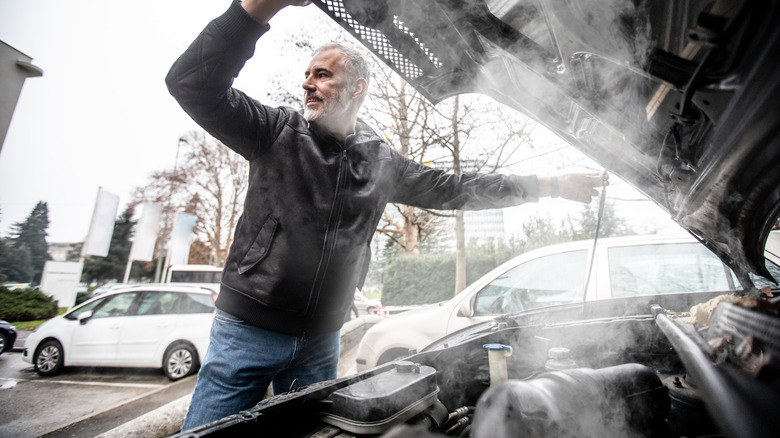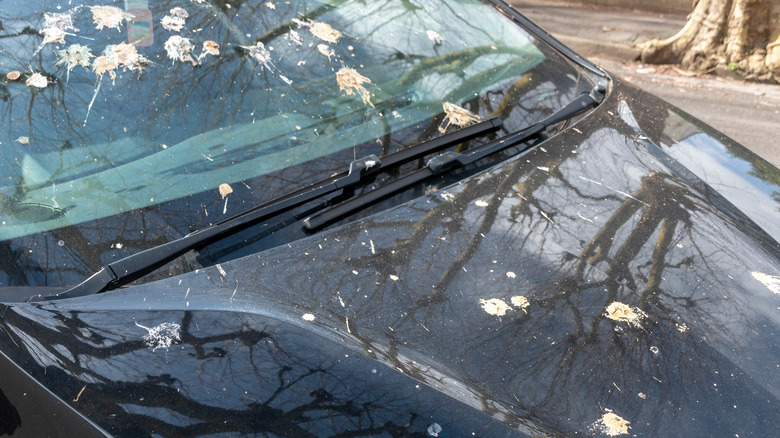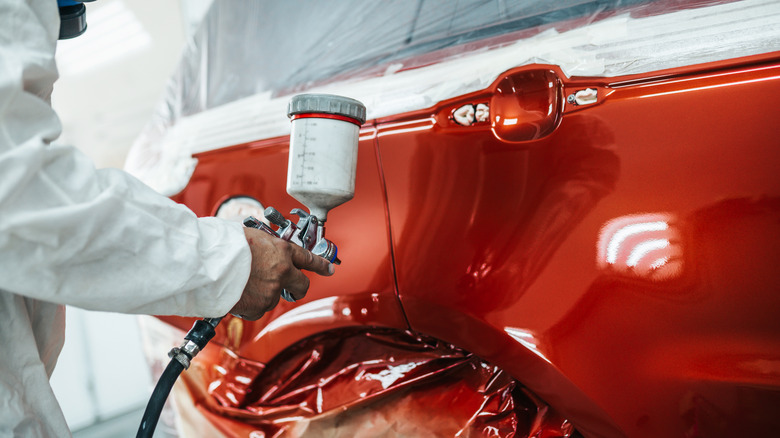6 Reasons Why Your Car's Paint Is Chipped
Cars can mean many things to different people. For some, it can be like a collectible you keep in your garage and bring out for special occasions. For others, it can be a trusted companion that you take with you for all of life's adventures. Regardless, keeping your car running (and looking) great takes some commitment, especially when it comes to its paint.
Typically, vehicle paint lasts up to 15 years, but some cars can begin to show signs of paint issues as early as five years. For this reason, it is recommended that you repaint your car every five years to keep it looking its best. Because cars are exposed to the elements frequently, there is an endless list of paint-related hazards that your car can experience, such as paint chipping.
Paint chips can be a minor inconvenience that can be repaired from home or a serious concern that may require professional help. Because the right (and well-maintained) paint color can impact your car's resale value, making an effort to maintain it can mean all the difference when and if you do.
The average cost of repairing a paint chip ranges from $100 to $400. However, this number can change drastically depending on the evaluation. When it comes to car paint chip damage, there are three main ways to evaluate it: size, depth, and quality. Here are some reasons why it happens and why it matters that you address it right away.
Accidents
The most obvious way a car's paint becomes chipped is due to accidents, whether on the road, in the parking lot, or at home. In fact, Crime Scene Investigator Network shares that paint chips are among the many types of evidence used in hit-and-run cases. In its Physical Evidence Bulletin [PDF], it mentions how you can physically match paint chips (and other vehicle body parts) with suspect vehicles, confirming that it's possible to obtain the make, model, and year of a vehicle from paint transfer.
Depending on the degree of chip damage from the accident, you may need to pay for professional repair, which can be quite expensive. However, if you've been keeping up with your insurance payments, you may not have to spend all out of pocket. Because of this, it's important to make sure that you understand your car coverage and what's excluded. Some common exclusions in car insurance include wear and tear, mechanical failures, and manufacturing defects.
If your car paint chips due to a hit-and-run case, Crime Scene Investigator Network recommends collecting evidence, such as photographing all areas showing fresh damage on the involved vehicles and collecting samples, which are kept in separate containers. If possible, you may also want to compile any video from your car's dashboard camera or CCTV cameras within the vicinity. With the proper documentation, you can make the process of collision insurance claims less stressful.
Road issues
In a perfect world, we'd all be driving on safe, well-maintained roads every day. However, the reality is that new roads are built constantly, especially in America, and it's likely going to continue this way for many years to come. In 2022, Statista published data revealing that the projected U.S. highway and street construction value was estimated to be $153.3 billion by 2027.
In addition, existing roads also need constant repair and maintenance. On average, those road surfaces last around 25 years; it adds that they may require resealing every 10-13 years to remain usable. Because of this, you're likely going to encounter roads in the middle of construction or undergoing preventive maintenance at some point.
Unfortunately, less developed roads or roads in the middle of construction or repair pose additional risks to your vehicle. Among the different types of road accidents related to construction are issues like narrowed lanes or changes in traffic leading to collisions, obstacles, and objects on roadways.
With tight spaces, sharp tools, and heavy machinery, the risk of your car paint accidentally being chipped on the road can definitely increase. In addition, whether it is rocks, dust, debris, broken glass, loose concrete, gravel, or other construction-related materials, plenty of little sharp objects can accidentally damage your car paint.
Cleaning materials and techniques
In some cases, something as simple as incorrectly washing your vehicle can lead to paint-related damage. For example, using household cleaners that are too harsh for your car's paint can cause it to dry out, crack, and likely chip. To prevent this, it's important to only use cleaning formulas specifically designed for washing cars, like car wash soaps.
While you're at it, it's also a good idea to invest in microfiber cloths, which are less likely to damage your vehicle while washing it. Typically, the ideal microfiber cloth size will vary depending on the part of the vehicle you are washing, such as small towels (14-inch x 14-inch or 16-inch x 16-inch) for windows and large towels (16-inch x 24-inch or 27-inch) for the body. It also mentions that microfiber cloths can last up to 500 washes when properly cared for.
Once all is said and done, it's also important to remember that the way you dry your car after a car wash matters. This is because leaving your car to air dry after a wash can lead to water spots, which can lead to lasting damage to the finish.
On the other hand, you may even want to avoid automatic car washes in general because their high-pressure sprayers or abrasive sponges can scratch the paint and make it more likely to peel. In addition, poor maintenance for automatic car wash brushes can lead to stiffness and water spots.
Weather conditions
Vehicle paint expands and contracts depending on the temperature, which can shift dramatically from a monthly to even daily timeline. While car paint can usually withstand intermittent temperature fluctuations, the contraction cycle can lead to weakened paint layers with time, making it more prone to chipping in the future.
Aside from increasing your tire degradation, risk of battery damage, and fluid evaporation, hot weather can definitely impact your vehicle's exterior. When exposed to high temperatures and sunlight, your car's paint is at risk of fading, peeling, or cracking. On the other hand, low temperatures can also affect elasticity, which allows it to expand and contract. This can cause paint hardening or brittleness, which increases the likelihood of cracking and chipping upon impact.
Temperature also plays a big role in the repainting process of your car. It's recommended to stay between 59 and 77 degrees Fahrenheit, as well as less than 85% humidity when painting or touching up your car for it to cure properly.
Exposure to corrosive elements
During the cold or snowy season, many cities also employ the use of de-icing chemicals and salt to make roads less slippery. While this can prevent road-related accidents, it can lead to corrosive damage to your car paint and its undercarriage and wheels.
In combination with oxygen and water, salt can accelerate rust formation, making existing paint chip damage worse and causing issues with your brake systems. To prevent this from happening, you can apply rust inhibitors to your vehicle before the winter season begins and keep up with your regular car maintenance schedule so professional mechanics can address early signs of rusting before the damage spreads.
Aside from the weather, there are also a lot of natural things in the environment that can impact your car's paint quality, including bugs, tree sap, and even bird poop. While exposure to corrosive elements won't necessarily chip your car's paint right away, it can impact its overall longevity and increase its proneness to chipping.
When it comes to acidic elements, remove them quickly to avoid hardening and bonding tighter to the paint. Because deposits like bird droppings sometimes contain seeds, stones, and other things that can scratch your car paint, Shell mentions that it's best to soften it first and "lift" the wet stain off instead of wiping it.
Poor quality paint
Before the 1980s, lead paint was commonly used in vehicles because it had a lot of advantages, like fast drying time, durability, and high pigmentation. However, it also came with consequences, such as possible neurological damage and reproductive complications. Because of changing environmental standards and the increasing knowledge of its health impacts on workers, many lead-based paints were banned in 1978 in the United States.
Although most car manufacturers have stopped using lead-based paint for their newer models of vehicles, some people may still use them for vintage car restoration purposes. While car companies can vouch for the consistency and quality of their paint straight out of the dealership, you may encounter issues if you ever paint your car yourself or get it repainted by a third-party shop. In fact, some mechanics may even try to overcharge you.
Alternatively, the issue may not be the paint itself used but rather its application. Although newer types of paint like Urethane are known to be long-lasting, its quick-drying properties and temperature sensitivity can be difficult to use for less experienced painters, which can affect how smooth the paint is, how well the color is matched, and how prone it will be to chipping.
For leased cars, FINN Car Subscription claims that dealerships often allow up to $1,000 in wear and tear before charging you. Although your insurance coverage for paint chips may vary, you can opt to have paint chips fixed beforehand to avoid issues with the return process.
